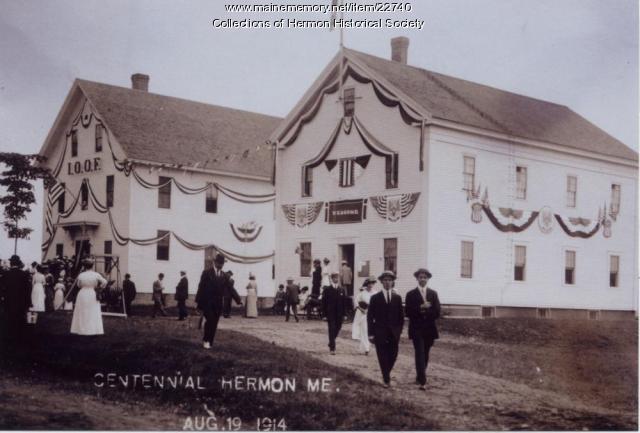Keywords: Town and city planning
Item 148242
Contributed by: City of Portland - Planning & Development Date: 1887-09-05 Location: Portland Media: Photographic print
Item 7395
Old City Building, Lewiston, ca. 1885
Contributed by: Lewiston Public Library Date: circa 1885 Location: Lewiston Media: Phototransparency
Item 110083
Preliminary Sketches for Changes in Town Hall, Freeport, 1920-1930
Contributed by: Maine Historical Society Date: 1920–1930 Location: Freeport Client: Freeport Town Hall Architect: Poor & Thomas
Item 109223
Bangor-Old Town Municipal Airport, Bangor, 1945-1948
Contributed by: Maine Historical Society Date: 1945–1948 Location: Bangor Client: Cities of Bangor and Old Town Architect: Eaton W. Tarbell
Exhibit
From Sewers to Skylines: William S. Edwards's 1887 Photo Album
William S. Edwards (1830-1918) was a civil engineer who worked for the City of Portland from 1876-1906. Serving as First Assistant to Chief Engineer William A. Goodwin, then to Commissioner George N. Fernald, Edwards was a fixture in City Hall for 30 consecutive years, proving indispensable throughout the terms of 15 Mayors of Portland, including all six of those held by James Phineas Baxter. Edwards made significant contributions to Portland, was an outstanding mapmaker and planner, and his works continue to benefit historians.
Exhibit
Home: The Longfellow House & the Emergence of Portland
The Wadsworth-Longfellow house is the oldest building on the Portland peninsula, the first historic site in Maine, a National Historic Landmark, home to three generations of Wadsworth and Longfellow family members -- including the boyhood home of the poet Henry Wadsworth Longfellow. The history of the house and its inhabitants provide a unique view of the growth and changes of Portland -- as well as of the immediate surroundings of the home.
Site Page
City of Portland Department of Public Works
View collections, facts, and contact information for this Contributing Partner.
Site Page
Rum, Riot, and Reform - Taverns, People, and Scenes
"In many of Maines small towns and cities, taverns were the center of social and political life. William McLellan Sr., Portland, ca.1800Maine…"
Story
Biddeford City Hall: an in-depth tour of this iconic building
by Biddeford Cultural & Heritage Center Voices of Biddeford project
Visual tour and unique insights of Biddeford’s historical landmark
Story
Monument Square 1967
by C. Michael Lewis
The background story and research behind a commissioned painting of Monument Square.
Lesson Plan
Building Community/Community Buildings
Grade Level: 6-8
Content Area: Social Studies
Where do people gather? What defines a community? What buildings allow people to congregate to celebrate, learn, debate, vote, and take part in all manner of community activities? Students will evaluate images and primary documents from throughout Maine’s history, and look at some of Maine’s earliest gathering spaces and organizations, and how many communities established themselves around certain types of buildings. Students will make connections between the community buildings of the past and the ways we express identity and create communities today.

















